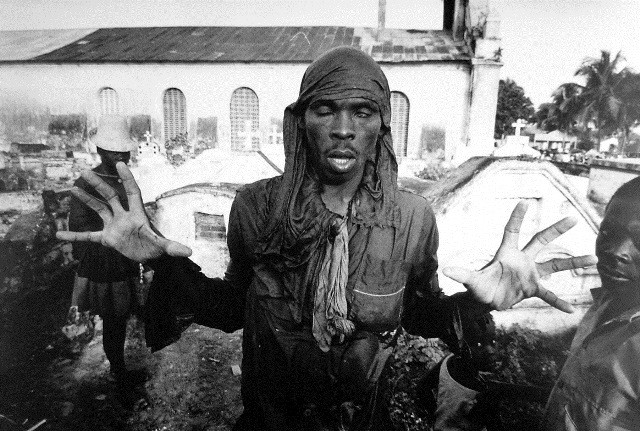Leonore Mau
08 Nov - 21 Dec 2014
LEONORE MAU
The Second Face - Hommage á Leonore Mau
8 November - 21 December 2014
The face is the key to a person’s personality. In an artist’s portrait we expect to be shown more than a person’s mere appearance. It is the photographic portrait where the ambivalence of identity and image is most evident: "For the Photograph is the advent of myself as other: a cunning dissociation of consciousness from identity” (Roland Barthes).
States of consciousness are present in Leonore Mau’s photography, whether in her work devoted to Afro-American religions in Brazil, the Caribbean and Miami or in her documentation of psychiatric hospitals in villages in Africa. It is there in the faces of those caught in a trace generated by the rituals of the Macumba, Candomble and Santeria, and the states of consciousness experienced by a patient under the influence of psychiatric drugs. Leonore Mau succeeds in creating portraits in which she permeates the psychological and in doing so breaks through anthropological and social contexts. Through her work she presents to us her own artistic understanding of the face. Here the images of the spirit are drawn, possessed by gods and demons, interwoven into masked faces.
Leonore Mau was a photographer for the big German newpapers. As with her other documentary works, her photographs from Miami were presented with text by Hubert Fichte and published in Die Sterne (The Star) and Die Zeit (The Times) as photographic illustrations for journalist reports.
Leonore Mau’s pictures are fascinating as they capture a phenomenon which is difficult to believe: The presence of gods taking over the body and mind of the devotee. The unbelievable takes place in the presence of the photographer with a camera. In fact, Mau has used the ethnographical method of participant observation, to build up and establish contact and trust between herself and the religious community, sometimes over a period of months. Each portrait documents an encounter and characterised not only the portrayed but also the person behind the camera.
The Second Face - Hommage á Leonore Mau
8 November - 21 December 2014
The face is the key to a person’s personality. In an artist’s portrait we expect to be shown more than a person’s mere appearance. It is the photographic portrait where the ambivalence of identity and image is most evident: "For the Photograph is the advent of myself as other: a cunning dissociation of consciousness from identity” (Roland Barthes).
States of consciousness are present in Leonore Mau’s photography, whether in her work devoted to Afro-American religions in Brazil, the Caribbean and Miami or in her documentation of psychiatric hospitals in villages in Africa. It is there in the faces of those caught in a trace generated by the rituals of the Macumba, Candomble and Santeria, and the states of consciousness experienced by a patient under the influence of psychiatric drugs. Leonore Mau succeeds in creating portraits in which she permeates the psychological and in doing so breaks through anthropological and social contexts. Through her work she presents to us her own artistic understanding of the face. Here the images of the spirit are drawn, possessed by gods and demons, interwoven into masked faces.
Leonore Mau was a photographer for the big German newpapers. As with her other documentary works, her photographs from Miami were presented with text by Hubert Fichte and published in Die Sterne (The Star) and Die Zeit (The Times) as photographic illustrations for journalist reports.
Leonore Mau’s pictures are fascinating as they capture a phenomenon which is difficult to believe: The presence of gods taking over the body and mind of the devotee. The unbelievable takes place in the presence of the photographer with a camera. In fact, Mau has used the ethnographical method of participant observation, to build up and establish contact and trust between herself and the religious community, sometimes over a period of months. Each portrait documents an encounter and characterised not only the portrayed but also the person behind the camera.

